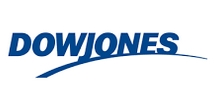Definition of the Dow Jones Industrial Average
Known by many names, including the DJIA, the Dow 30, Industrial Average, DJI or even just the Dow, the Dow Jones Industrial Average is a major stock market index, one of several that were established by the co-founder of Dow Jones & Company, Charles Dow. This index dates back to 1886, and today it is owned by S&P Dow Jones Indices, and stands as the most important of the Dow Averages. It is the second-oldest market index in the United States, with the oldest (the Dow Jones Transportation Average) having also been created by Charles Dow. The Industrial Average Index reveals how 30 of the largest publicly owned companies with a base in the US have been trading over a standard stock market trading session. The term “Industrial” in this index’s title is a relic from its history, as today most of the modern companies on the index are not related to traditional heavy industries. The average is price-weighted, and is currently a scaled average to take into account any effects of adjustments and stock splits. The index’s value does not represent the actual average of its component stock prices, but instead the sum of its component prices once they have been divided by a divisor that enables a consistent value to be generated for the index. At the present time, the divisor is less than 1, and therefore the index’s value is higher than the total of its component prices.
The Dow Industrial Average was designed to gauge how the American industrial sector is performing in terms of the nation’s economy. However, its performance today is influenced by a range of factors including foreign and domestic political events such as terrorism, war and natural disasters as well as economic and corporate reports. The Dow Jones Industrial Average is one of the most commonly watched indices in the world among investors, and is considered to be one of the best indicators of the health of the US equity market.
| Broker | Bonus | More |
|---|
History of the Dow Jones Industrial Average

Even through the economic uncertainties of the 1960s and 1970s, the Dow still continued to make respectable gains, until in 1972 the average closed for the first time above the 1,000 mark. This turned out to be a brief high, as the 1973–1974 Stock Market Crash led to its level losing almost half of its value, dropping to 577.60. Throughout the end of the decade and into the recession of the early 1980s, the level rose and fell numerous times until the 1990s saw the advent of the dot com boom. In 1995, the Dow closed above 5,000 for the first time and continued to rise ever higher to levels of over 8,000 by July 1997, while 1999 saw celebrations on the trading floor as the Dow finally closed above 10,000 for the first time. Over the early years of the new millennium, the DJIA saw several downturns in response to the events of September 11th 2001, the Lehman Brothers bankruptcy and several other economic incidents. As the decade turned, the Dow experienced some volatility, but was generally moving upwards once more, until today, when it is generally closing at levels of over 18,000.
What are the Current Companies Listed on the Dow Jones Industrial Average Index?
Although the premise of the DJIA is the same today as when it was first created, the companies that are listed on the index have changed over time. Today, less than 50% of the companies listed in the top 30 appeared on the list in 1989, and only five of the companies have been listed for 50 years. General Electric is the only remaining company from the conception of the index. While originally the companies on the Dow index were traditional heavy industries, today only around two thirds are in the manufacturing sector, with the rest being made up from diverse industries such as financial services, information technology and entertainment. Some of the current companies on the DJIA include Boeing, Walmart, Apple, American Express, Coca Cola, Goldman Sachs, IBM, McDonald’s, Nike, Pfizer and Microsoft.
How is the Dow Jones Industrial Average Calculated?
The Dow Jones Industrial Average is a price-weighted index, meaning that stocks that have a higher share price have a greater weighting in the index. When the Dow was established, the average was calculated by adding together the prices of all 12 of the component stocks and dividing the total by 12. However since that time, there have been several subtractions and additions to the index, with stock splits and mergers having to be accounted for. Whenever an event like this takes place, the Dow’s divisor is adjusted so that its value will not be affected. This explains why the Dow Industrial Average can be at a level of 17,000 or 18,000 when the total of its component stock prices could not match that number.
Other educational materials
- Australian Securities Exchange (ASX)
- CAC 40 Index
- FTSE All-Share Index
- Euronext
- FTSE 100 Index
- FTSE AIM All-Share Index
Recommended further readings
- Low q-moment multifractal analysis of Gold price, Dow Jones Industrial Average and BGL-USD exchange rate. Ivanova, K. and Ausloos, M., 1999. The European Physical Journal B-Condensed Matter and Complex Systems, 8(4), pp.665-669.
- Information costs and liquidity effects from changes in the Dow Jones Industrial Average list. Beneish MD, Gardner JC. Journal of Financial and Quantitative Analysis. 1995 Mar 1;30(01):135-57.


